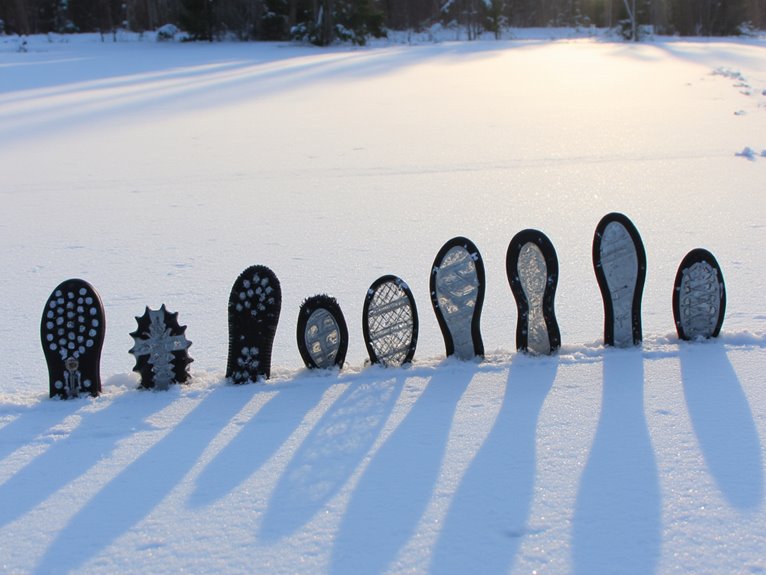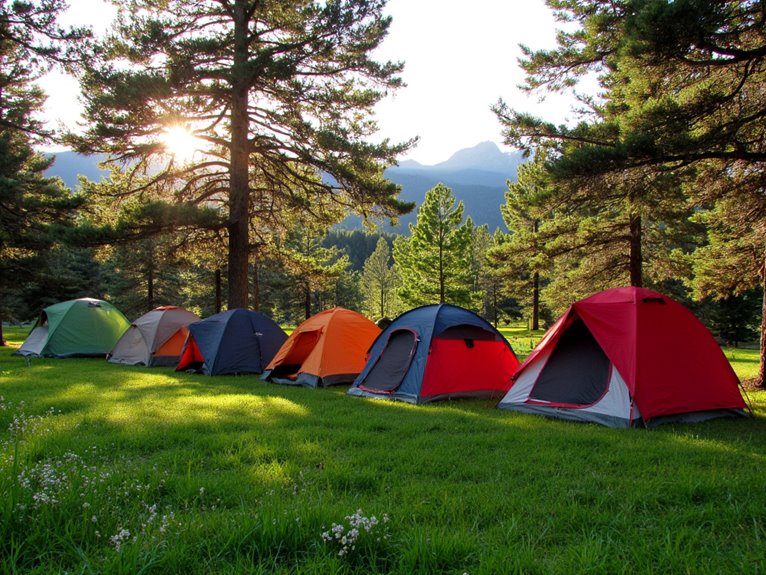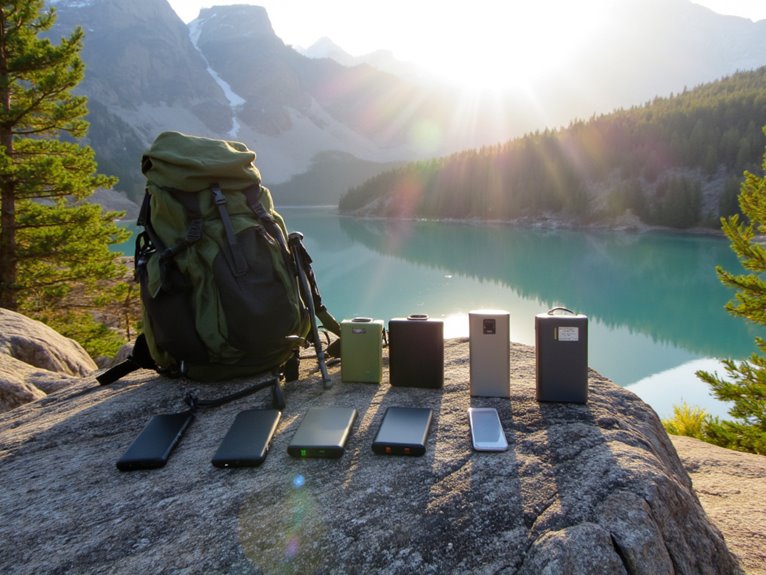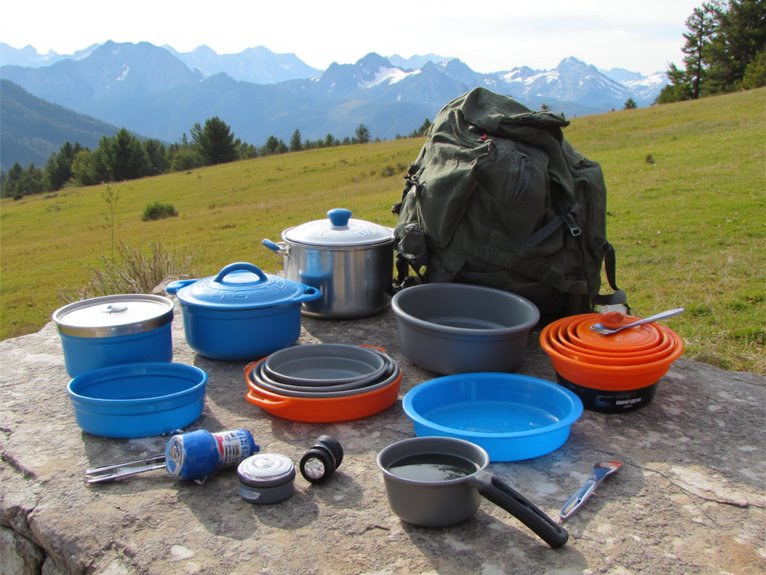How to Get Warm in the Forest?
In the forest, generating and conserving body heat is vital to survival. Find or create a shelter that shields from wind, rain, and snow, and start a fire safely to provide warmth. Optimize your clothing to regulate body temperature by layering breathable, moisture-wicking fabrics, and insulate your body properly. Stay dry to stay warm, and ration your body heat to conserve energy. Engage in low-intensity physical activity to increase blood flow, and fuel your body with warm, nourishing foods and drinks. As you venture deeper into the wilderness, discover the secrets to staying warm and comfortable, and uncover the techniques that will keep you thriving in the forest.
We are supported by our audience. When you purchase through links on our site, we may earn an affiliate commission, at no extra cost for you. Learn more. Last update on 25th December 2025 / Images from Amazon Product Advertising API.
Find or Create a Shelter
As the forest's chill begins to seep into your bones, a reliable shelter becomes the cornerstone of survival, providing a haven from the elements and a sense of security in the unforgiving wilderness.
When searching for a natural shelter, look for rock overhangs, caves, or hollowed-out trees.
If none are available, create your own using fallen branches, leaves, and other natural materials.
A lean-to shelter, constructed by propping branches against a tree or rock, can provide adequate protection.
Alternatively, a debris hut, made from a framework of branches and covered with leaves and twigs, can be a more substantial option.
Prioritize finding or creating a shelter that will shield you from wind, rain, and snow, allowing you to conserve body heat and stay warm in the forest.
Start a Fire Safely
Having secured a reliable shelter, your next priority should be to start a fire safely, as this will be essential for warmth, signaling, and purifying water in the forest.
To do so, gather dry, fluffy tinder, such as dry leaves or grass, and place it in a fire pit or ring. Add kindling, like small twigs and sticks, in a teepee shape.
Light the fire with a match, lighter, or fire starter, and gradually add larger logs as the fire grows.
Keep a bucket of water or a fire extinguisher nearby to safeguard against uncontrolled flames. Always prioritize caution when starting a fire in the forest, and follow local regulations to minimize environmental impact.
A well-built fire will be your lifeline in the wilderness.
Use Clothing to Your Advantage
Optimize your clothing to regulate body temperature by layering breathable, moisture-wicking fabrics that will help you conserve heat in the cold forest environment.
This approach allows for efficient heat retention while preventing moisture buildup, which can lead to heat loss.
Choose base layers made of merino wool, silk, or synthetic fabrics that wick moisture away from your skin.
Mid-layers should provide insulation without compromising breathability, while outer layers should be wind- and water-resistant.
Avoid cotton as it retains moisture, making you colder.
By dressing in layers, you can adjust to changing temperatures and activities, ensuring you stay warm and dry in the forest.
This strategic approach to clothing will help you conserve energy and stay warm, even in the chilliest of forest environments.
Insulate Your Body Properly
Beyond regulating body temperature through clothing, it's just as essential to insulate your body properly by protecting your extremities and core from heat loss.
This is where layering and clever positioning come into play.
To maximize insulation, focus on the following key areas:
- Wear a warm hat to prevent heat loss from the head.
- Use gloves or mittens to keep hands warm and toasty.
- Insulate your neck with a scarf or neck gaiter.
- Wear warm socks to keep your toes cozy.
- Use a sleeping bag or emergency blanket to retain body heat when resting.
Stay Dry to Stay Warm
In the forest, moisture is a silent killer, and staying dry is essential to maintaining body heat, as wet clothes and skin can quickly drain your body's warmth.
When venturing into the wilderness, it's vital to prioritize waterproof gear and clothing. Bring a waterproof jacket, pants, and gloves to keep you dry in rainy or snowy conditions.
Avoid cotton as it retains moisture, instead opt for synthetic or merino wool clothing that wicks moisture away from your skin.
Additionally, bring a spare set of clothes in case your primary layer gets wet.
Find or Create a Bedding
Creating a warm and dry bedding is essential for a restful night's sleep, and in the forest, finding or creating a suitable bed can be a matter of survival.
A good bed can help retain body heat, keeping you warm and comfortable throughout the night.
Look for natural formations like rock overhangs or caves that can provide protection from the elements.
Gather dry leaves, grass, or pine needles to create a dry and warm bed.
Use a space blanket or emergency bivvy sack to reflect body heat and keep warm.
Create a bed of fir branches or evergreen boughs to provide insulation and comfort.
If possible, construct a lean-to shelter using fallen branches and leaves to block wind and rain.
Ration Your Body Heat
Your body's internal thermometer is a precious resource in the forest, and conserving it is vital to staying warm and alive.
To ration your body heat, prioritize reducing heat loss over generating heat. Avoid excessive movement, as it increases heat loss through respiration and perspiration.
Instead, focus on minimizing exposure to cold air and surfaces. Remove any wet clothing, as it rapidly conducts heat away from your skin.
If you're unable to start a fire, use a space blanket or emergency bivvy sack to retain body heat.
Stay Active to Stay Warm
Engage in low-intensity physical activity, such as marching in place or jumping jacks, to stimulate blood flow and warm your muscles without expending too much energy. This will help increase your core temperature and keep you warm.
Avoid high-intensity activities that can lead to excessive sweating, which can cool you down further.
Some other ways to stay active and warm in the forest include:
- Clap your hands or stamp your feet to increase blood flow.
- Do some light stretching exercises to loosen up your muscles.
- Walk around slowly, taking small steps to keep your blood flowing.
- Flap your arms like a bird to get your heart rate up.
- Do some deep knee bends to get your legs moving.
Find Warmth in Food and Drink
As we venture into the domain of finding warmth in the forest, our attention turns to the sustenance that can help us combat the chill.
In this unforgiving environment, the right food and drink can be a lifesaver, providing a much-needed boost to our body heat.
From steaming hot beverages to warming forest foods and body heat-boosting snacks, we'll delve into the essential items to keep in your backpack.
Hot Beverages to Go
Four hot beverages – coffee, tea, hot chocolate, and spiced cider – are essential companions for a forest adventure, providing a quick warmth boost when you need it most.
These drinks are easy to prepare, pack, and consume on the go, making them perfect for a forest excursion.
When choosing a hot beverage, consider the following:
- Instant coffee or tea bags for a lightweight and convenient option.
- Thermal flasks to keep your drink hot for hours.
- Spiced cider mixes for a flavorful and warming pick-me-up.
- Hot chocolate with a pinch of cayenne pepper for an extra kick.
- Insulated tumblers to keep your hands warm while sipping.
Warming Forest Foods
Fuel your forest adventure with warm, nourishing foods that provide sustenance and comfort in the great outdoors.
Warming forest foods are essential to maintain body heat and energy levels.
Opt for high-calorie, high-carbohydrate foods like energy bars, nuts, and dried fruits to keep you fueled.
Hearty soups, stews, and chili can be packed in thermoses or cooked over a campfire.
Other warm, comforting options include oatmeal, instant mashed potatoes, and warm granola.
Don't forget to bring warm, spiced drinks like hot cocoa or apple cider to complement your meal.
Body Heat Boosters
When venturing into the forest, it's essential to prioritize body heat maintenance, and certain foods and drinks can substantially boost your internal thermostat, keeping you warm and toasty even in the chilliest of environments.
To find warmth in food and drink, consider the following body heat boosters:
- Ginger: A natural circulatory stimulant that increases blood flow, warming the body from the inside out.
- Cayenne Pepper: Rich in capsaicin, which stimulates the metabolism, generating heat and energy.
- Hot Chocolate: A warm, comforting drink that raises body temperature and lifts spirits.
- Oatmeal: A complex carbohydrate that provides sustained energy and warmth.
- Garlic: A natural vasodilator that increases blood flow, warming the extremities.
Signal for Help Effectively
When stranded in the wilderness, signaling for help is essential to getting rescued quickly and safely.
Two effective methods for signaling are flashing light signals and using a whistle to grab attention.
Flashing Light Signals
By incorporating flashing light signals into your distress signaling repertoire, you can substantially increase the visibility of your distress signal, even in dense forest environments.
Flashing lights can be seen from a distance, making them an effective way to signal for help.
Use a flashlight or other light source with a flashing mode.
Aim the light towards any potential rescuers or aircraft.
Flash the light in a consistent pattern, such as three short flashes followed by a pause.
Repeat the pattern regularly to maintain visibility.
Consider using a mirror or other reflective surface to amplify the light signal.
Whistle for Attention
A loud, shrill whistle can pierce through the forest's ambient noise, making it an ideal tool for signaling distress and grabbing the attention of potential rescuers.
When lost in the wilderness, every second counts, and a whistle can be a lifeline.
To use a whistle effectively, blow it in short, sharp blasts of three to five seconds, followed by a brief pause.
Repeat this pattern to convey a sense of urgency.
This international distress signal is widely recognized, increasing the chances of being heard and rescued.
Always carry a whistle with you on outdoor adventures, and know how to use it to signal for help when you need it most.




